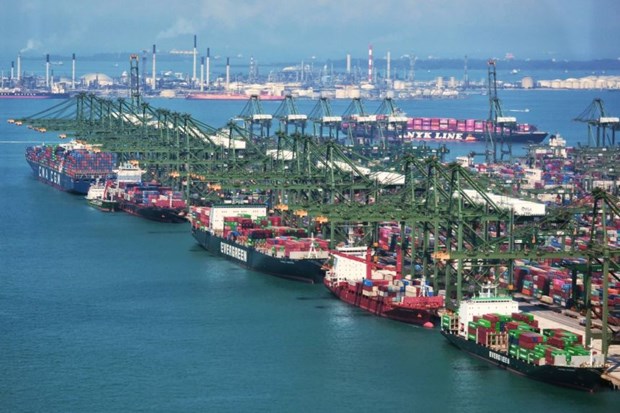World's mammoth RCEP to benefit Singapore, regional nations
The Regional Comprehensive Economic Partnership (RCEP), the world’s largest trade pact, will reduce tariffs and harmonise trade rules, and Singapore and regional nations stand to gain from it by being more deeply plugged into global supply chains.
 |
| Singapore stands to gain from RCEP by being more deeply plugged into global supply chains. (Photo: straitstimes.com) |
According to the Monetary Authority of Singapore (MAS)’s biannual macroeconomic review released on April 28, RCEP is expected to increase regional trade flows and deepen cross-border linkages among its 15 member economies.
Like other trade agreements that Singapore signed with China and the Republic of Korea, RCEP helps Singapore become more integrated into the supply chains centred on these countries.
In the same vein, the pact will boost the region’s competitiveness as a location for supply chains, the review noted.
Overall benefits from RCEP fall into two categories.
The first is tariff reductions. These average a small decline of 0.7 percent by the 10th year, and one percent by the 20th year after the agreement comes into force.
Tariff cuts differ significantly across products and economies, with a more gradual pace of reduction in Cambodia, Laos and Vietnam, to allow more time for the economies to adapt to increased competition.
Output in sectors such as textiles and garments, leather, wood and paper will grow faster during the first 10 years of the agreement, while sectors like agriculture, energy and mining, chemicals and electronics will expand at a faster pace in the longer term.
Individual countries in the trade bloc are expected to see a small boost in their GDP of between 0.4 percent and 0.6 percent.
The second category of gains comes from harmonisation of rules of origin, which govern how locally produced content is assessed in order for products to be eligible for preferential import tariff rates.
With common rules of origin (CRO) under RCEP, companies can more optimally source raw materials and intermediate inputs from member countries, while benefiting from lower tariff rates.
It observed that although the region already has a large number of trade agreements, RCEP brings together key upstream high-tech manufacturers such as Japan and the Republic of Korea, mid-stream producers including Thailand and the Philippines, and countries with relatively low labour costs such as Cambodia, Laos and Myanmar, providing more opportunities for firms to enhance supply and trade linkages.
Source: VNA